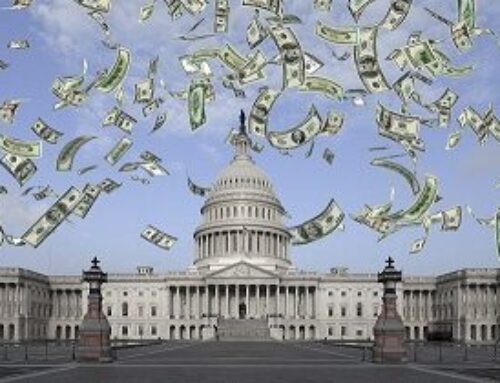It should have been easy, but Congress didn’t like the budget caps they set for themselves in the Budget Control Act of 2011. They’ve done this before. In fact, since fiscal year 2012 they have never lived under the caps, amending them in the American Taxpayers Relief Act of 2012, the Bipartisan Budget Act of 2013, and the Bipartisan Budget Act of 2015. But this time was different. In the past, Congress had the budgetary shame (dignity?) to come up with at least sham offsets to counter the costs. This time they didn’t even bother with that nicety.
Instead they loaded the package with other taxpayer giveaways. Nearly $90 billion in “off budget” disaster assistance was tucked inside. A whole passel of special interest tax breaks were included. These were left on the cutting room floor when last year’s tax package was developed. We already knew that legislation wasn’t reform. But to underscore that, retroactively extending provisions that expired more than a year ago isn’t sound tax policy, it’s blatantly providing subsidies for business decisions that already occurred. In some instances this isn’t just going to cost taxpayers now, it’s going to be waste in the future. Such is the case with the egregious expansions of the nuclear production tax credit and the carbon capture and storage tax credit. Best of all, these extenders are revived for 2017, meaning they’ve already expired, again. (See you next year.)
There was even another subsidy grab in this package. Cotton and dairy producers got extra. While the agriculture committees have spent four years demanding nobody “selectively open up” the 2014 farm bill—to ensure only active farmers get subsidies, to cut egregious payments to profitable crop insurance companies, or rein in the $18 billion over-budget “shallow loss” programs—they inserted 15 pages into the 650-page bill to direct $1.2 billion to businesses producing dairy or cotton. In reality this sets the stage for an even costlier farm bill later this year by resetting the baseline higher—thus enabling aggies to garner more cash when the time comes. All of this without a single minute of debate. While they are crying poor, the fact is cotton’s so “unprofitable” farmers are expanding their plantings by 25 percent.
Demonstrating the benefits that come with being in charge, Majority Leader Mitch McConnell (R-KY) once again pulled home a favor for the Bluegrass state. Much like the Kentucky Kickback he attached to the fiscal cliff deal—an earmark which bailed out the Olmstead Locks and Dam water project – a very parochial provision was added in this bill that would benefit two colleges in the Bluegrass state that would otherwise be subject to a new 1.4 percent tax on private college and university endowments.
What’s most pitiful is that the costly package still didn’t close the book on the fiscal year 2018 spending bills. They still have to be written and have a new deadline of March 23rd – almost halfway through the fiscal year.
In the meantime, the president is supposed to release his fiscal year 2019 budget request on Monday. We are anxiously awaiting its arrival so we can comb through the numbers, but it is far from clear what impact it will have. All president’s budgets are wish lists that are effectively “dead on arrival” in Congress. But we have to say that aside from defense spending – where the president got more than he asked for in FY18 – his last budget request was deader than most. The question is will this package seek to be more evolutionary than revolutionary? We’ll see.
In the interim, here’s some sobering data. We’ll get updated numbers from the Congressional Budget Office soon that includes the just enacted spending bill and last year’s tax legislation, but we know that we are staring at a trillion dollar deficit this year. That comes on top of a more than $20 trillion debt. Interest rates are rising and the country can expect to spend more than $800 billion annually to service that debt in just a few years’ time. Both tax cuts and deficit spending can be used to “stimulate” the economy. But considering the nation is eight years into an economic expansion, what are policymakers trying to stimulate? Or is it adding debt because they can?











Get Social